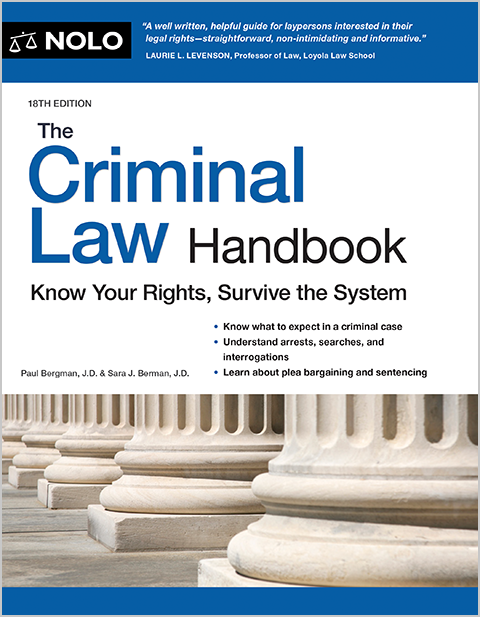States vary in their definitions and penalties for the crimes of assault, assault and battery, and aggravated assault.
The crimes of assault, assault and battery, and aggravated assault all involve intentional harm inflicted on one person by another. Any crime involving a physical attack—or even the threat of an imminent attack—is usually classified as an assault, a battery, or both. These acts can rise to the level of aggravated assault depending on the seriousness of the attack.
What Is an Assault? What Is a Battery?
Assault is often defined as any intentional act that causes another person to fear an attack or imminent physical harm. This definition recognizes that placing another person in fear of bodily harm is itself an act deserving of punishment, even if the victim of the assault is not physically harmed. It also allows police officers to intervene and make an arrest without waiting for the assailant to strike the victim.
In some states, assault crimes also include intentional acts that cause another bodily harm or involve an offensive touching. Other states refer to these crimes as battery offenses.
Examples of Assault and Battery
Read the scenarios below for examples of what constitutes assault and battery and what doesn't.
Example 1: Joe is walking down a city street carrying a bottle of soda. Mickey, walking along the same street, sees Joe approaching. Because of Joe's reputation as a hothead, Mickey immediately becomes fearful that Joe will swing the bottle at him when their paths cross. As they walk past each other, nothing happens. Joe has not committed an assault. Joe has a right to carry a bottle of soda in public, and Mickey's fear of being hit was not the result of Joe's behavior.
Example 2: Now, assume that, as they draw closer, Joe draws back his fist and tells Mickey, "You're going to pay for stealing my collection of baseball pennants." As Joe begins to swing his fist in Mickey's direction, Mickey sprints away and escapes harm. Here, Joe has committed an assault. His intentional conduct placed Mickey in reasonable fear of immediate bodily harm.
Example 3: Finally, let's say Joe catches up to Mickey and tackles him to the ground. Joe has committed assault and battery (or assault in some states and battery in others). Even if Mickey suffered little to no harm, it's still a crime.
What Is Simple Assault vs. Aggravated Assault?
The criminal laws of many states classify assaults as either simple or aggravated, according to the gravity of the harm that occurs or is likely to occur if the assailant follows through and strikes the victim.
Defining Simple Assault
Simple assault often carries misdemeanor penalties (and some states refer to this crime as a misdemeanor assault). This crime generally involves either the threat of immediate harm or a physical act that results in minimal injuries (such as bruising, pain, or scratches).
Raising a fist at someone and threatening to smack them would be a simple assault. Shoving or slapping a person that results in bruising may also be charged as simple assault. However, threats of future harm or words alone won't suffice for assault charges. To commit assault, the defendant must do some overt act (like moving toward the victim) to make the victim reasonably fear immediate harm.
Defining Aggravated Assault
Aggravated assault is a felony. An assault becomes aggravated or enhanced when the level or risk of harm increases. For instance, the following factors generally increase an assault to aggravated assault—the assault:
- results in or risks causing serious bodily harm
- was committed with a dangerous or deadly weapon
- was committed with the intent to commit a serious crime, or
- was committed against a vulnerable or protected victim.
Some assault laws name the aggravating factor—for example, "assault with a deadly weapon." A defendant who has prior convictions for assault could also face aggravated assault charges.
Serious bodily harm. States differ in how they define serious or great bodily harm. In the most general terms, it's anything more than bodily harm (scrapes, pain, bruising) but short of death. Some examples include broken bones, serious sprains, permanent injuries, disfigurement (such as knocked-out teeth or chemical burns), damage to internal organs, severe lacerations, extreme pain, gunshot wounds, and injuries requiring major surgery.
Deadly or dangerous weapon. Deadly weapons include guns, knives, brass knuckles, and other weapons designed to cause injuries. Dangerous weapons can be any object or substance that can cause serious harm or death by the way it's used, such as a rope, plastic bag, baseball bat, crowbar, axe, metal trophy, glass bottle, oven cleaner, or steel-toed boots.
Intent to commit a felony. A defendant who attacks someone intending to commit a felony or serious crime will often face aggravated assault charges. These intended crimes might include rape, robbery, burglary, or other violent offenses.
Protected victims. Many states' laws protect classes of vulnerable victims by imposing harsher penalties for assault and other crimes as well. These victims might be elderly victims, children, pregnant women, first responders, judges, hospital staff, corrections staff, teachers and school employees, and public employees with required duties. Assaulting someone as a hate crime can also result in aggravated assault charges.
Other Assault Classifications
As an alternative to classifying assaults as either simple or aggravated, some states recognize the different levels of harm that they can cause by classifying them as first- (most serious), second-, or third-degree (less serious) assaults.
Differences Between Assault, Battery, and Aggravated Assault |
|||
| Assault | Battery | Aggravated Assault | |
|
Intentional Act |
Places the victim in fear of immediate harm Causes bodily harm to victim |
(Only a separate crime in some states) Causes bodily harm to victim |
Intends to commit another felony or violent crime Causes or risks serious bodily harm to a victim Involves a deadly weapon Involves a protected victim |
|
Possible Penalties |
Misdemeanor: |
Misdemeanor: |
Felony: |
Examples of Aggravated Assault
Below are scenarios where a defendant would likely face aggravated assault charges.
Example 1: Alyssa is walking alone late at night when a man suddenly jumps in front of her and drags her into the bushes. The man begins to rip at her clothes. Fortunately, Alyssa hits the attacker with a rock and runs away to safety. The attacker is guilty of aggravated assault because the circumstances indicate that he assaulted Alyssa with the intent of raping her.
Example 2: A nurse in a nursing home facility slaps an elderly patient. The nurse may be convicted of aggravated assault in states that have enacted special statutes to protect elderly or mentally ill patients against violence by caregivers.
Example 3: A couple gets into a heated argument, and one partner grabs a glass beer bottle and smashes it over the other's head. The victim is knocked unconscious for several seconds and suffers a cut to the head. The partner committed aggravated assault with a dangerous weapon.
What Are Possible Defenses to Assault Charges?
Below are common defenses and defense strategies for assault charges.
Self-defense. A defendant can argue self-defense if they used reasonable force to protect themself or another person from the alleged victim's threatening or violent actions.
Accident. A prosecutor must prove that the defendant acted intentionally to prove assault. If the defendant got shoved in a bar and ended up knocking over the victim, the defendant didn't commit assault.
Words alone. A defendant who threatens to beat up someone hasn't committed assault. The prosecutor must prove that the defendant also committed some overt act that caused the victim to reasonably fear immediate harm.
It wasn't me. Misidentification happens, especially with eyewitness accounts. The defendant might argue that the police have the wrong person by presenting an alibi defense or pointing out inconsistencies in the eyewitness's testimony.
Not serious harm. A defense attorney could also argue that the victim's injuries don't rise to the level of serious bodily harm or that the risk of harm was not serious. This strategy wouldn't acquit the defendant, but it could reduce felony charges to misdemeanor charges.
What Are the Penalties for Simple Assault and Aggravated Assault?
The penalties for assault and aggravated crimes vary by state. Typically, they depend on the amount of harm done or threatened, the victim, and the offender's criminal record.
Simple Assault: Misdemeanor Sentences
Simple assault generally carries misdemeanor penalties that can result in jail time and fines. A person could spend a few days or up to a year in jail. Fines could range from $500 to $2,500 or more.
Aggravated Assault: Felony Sentences
Aggravated assault can result in stiff felony penalties, such as up to 10, 15, or even 20 years of prison time, plus maximum fines that can reach $10,000 or more. The punishment often depends on the level of harm threatened or inflicted. For instance, an aggravated assault involving a dangerous weapon or resulting in serious bodily harm (like broken bones) might carry a 10-year sentence. But if the assault threatens or results in great bodily harm or risk of death, the maximum penalty may be a 20-year prison sentence.
Assaults that are aggravated based solely on a victim's protected status or due to the offender's prior convictions tend to carry low-level felony penalties, such as two to five years in prison.
Is Probation an Option in Assault Cases?
A judge might sentence a first-time defendant to probation, which allows the person to serve all or part of their sentence in the community. Probation is less likely for repeat or egregious assaults. Conditions of probation might include attending anger management classes or substance abuse counseling, staying away from the victim, and paying restitution to the victim.
Restraining Orders and Restitution
Whether a defendant serves time in the community on probation or behind bars, a judge will likely issue a restraining or protective order against the defendant. This order prohibits the defendant from contacting or seeing the victim (even from behind prison walls). A violation can result in immediate arrest and an additional conviction.
If a victim suffers physical or emotional injuries resulting from the assault, the judge can order the defendant to pay for these medical and counseling bills. The defendant might also have to pay for any property damage done during the assault. Payments from the defendant to the victim are referred to as restitution.
Getting Legal Help
If you've been arrested or charged with a crime, consult an experienced criminal defense attorney or ask for a public defender. A knowledgeable lawyer will be able to fully explain the law in your state and advise you of your options.

